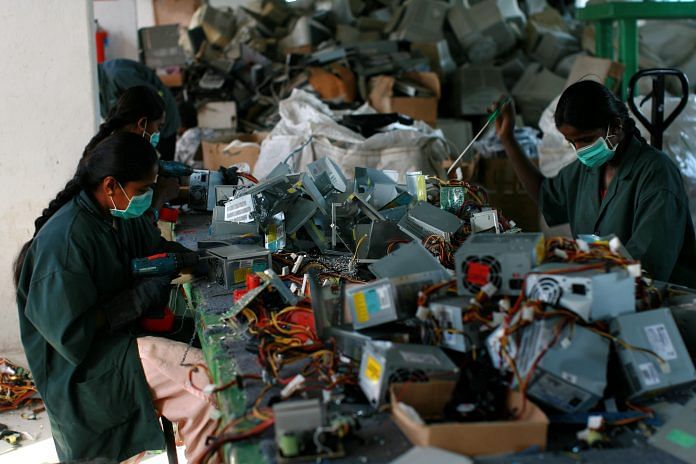EPFO payment rate eased for women workers from 12 to 8 per cent; Rs 3 lakh crore allocated for loans under Mudra Scheme.
New Delhi: If the Modi government’s focus on women empowerment has so far been limited predominantly to the precincts of the home, Arun Jaitley’s Budget 2018-19 has been a departure in this regard. In a bid to address the glaring statistics of women missing from India’s workforce, the Finance Minister has announced incentives for employers to hire women employees.
The Economic Survey released earlier this week, with a pink theme meant to emphasise the importance of women in the economy, had noted that women’s employment has gone down by 12 per cent since 2006-07 to 2016-17. In an apparent attempt to address this contradiction — female education rate has been increasing steadily, even as more women drop out of the workforce — Jaitley has announced that the government would ease payments under schemes for women workers administered by the Employees’ Provident Fund Organisation (EPFO) from 12 per cent to 8 per cent for the first three years of employment. This is expected to boost employment of women in various sectors of the formal economy.
Further, another significant announcement made by the Finance Minister underscores the government’s intention to strengthen women’s financial independence. An allocation of Rs 3 lakh crore for loans under the Pradhan Mantri MUDRA Yojana (PMMY), 76 per cent of whose beneficiaries are women, has been announced. The scheme, launched by the Prime Minister in April 2015, provides loans up to Rs 10 lakh to the non-corporate, non-farm small/micro enterprises.
Touching upon the government’s maternity benefit programme, Jaitley said the government has not only increased maternity leave for women from 12 to 26 weeks, but also ensured the provision of crèches in organisations. Given, the disproportionate burden of childcare on women, the provision of crèches allows women to continue to participate in the formal workforce even after childbirth.
While some of these announcements take off from older schemes, the government’s shift from the domestic to the public domain is conspicuous.
Although Modi’s popularity among women has been acknowledged by experts across the ideological spectrum, critics have so far argued that with schemes such as Ujjwala Yojana, which involves the redistribution of LPG benefits within the poorer population and Swachh Bharat, which invokes notions of women’s honour, the government has so far predominantly reinforced traditional sex roles.
While ‘Beti Bachao Beti Padhao’ — which Jaitley said has seen “unflinching success” — has focused on the issue of female education, it has largely been a social campaign of the government, with no more than Rs 200 crore allocated for the scheme since its launch in 2015.
With a clear focus on women’s employment and financial independence, the Modi government has shown intent to pull out women from the precincts of the home.






